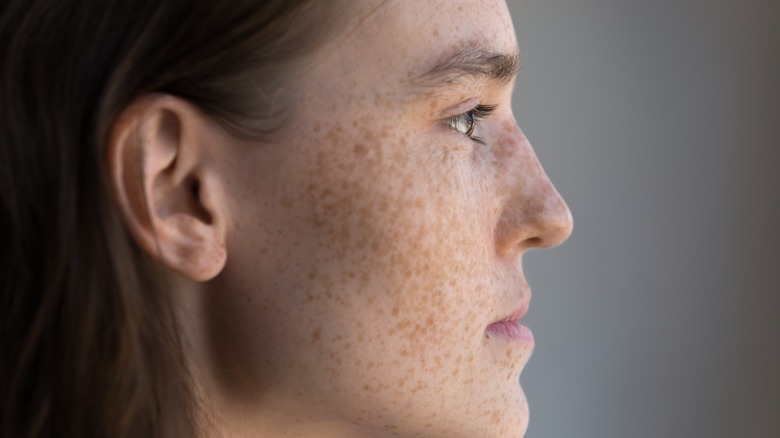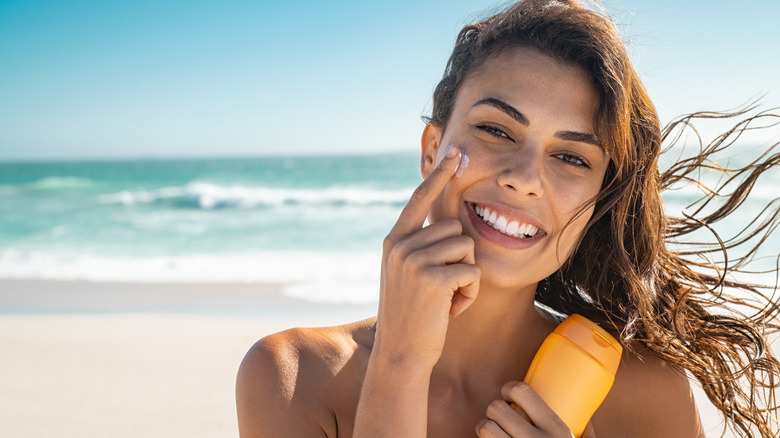Freckles Could Be A Sign Of Something More Serious
Freckles, those tiny spots that usually appear on your face, neck, or arms (or anywhere that gets a lot of sun), tend to be pretty common and generally harmless (via Cleveland Clinic). People who have lighter skin, or blond or red hair, tend to be most likely to develop freckles, but they can happen to just about anyone. MedicalNewsToday notes that two factors — sun exposure and genetics — are the most likely culprits for freckle development.
According to MedicalNewsToday, when your skin is exposed to the sun, it produces more melanin to protect it. This is why people who are prone to freckles tend to have more during the summer months. On the genetics front, freckle production can be traced back to the type of melanin your body makes, either pheomelanin or eumelanin. Unlike pheomelanin, eumelanin can protect the skin from the sun's ultraviolet rays.
There are two types of freckles you should be on the lookout for (via MedicineNet). The first of these, called "ephelides," are the more common types of freckles that tend to pop up during the summer months. They're the standard flat, tan or reddish freckles that range from 1 to 2 millimeters in size. The other type of freckles, called "lentigines," are the result of previous sun damage and tend to be larger, darker spots that don't fade in the winter. While both types of freckles are generally harmless, having freckles can be a precursor to a more serious condition, such as skin damage or even cancer.
Your freckles could pose a higher risk for skin problems
According to The Ohio State University, while freckles themselves aren't a sign of skin problems, people who are likely to develop freckles are also more vulnerable to the sun's rays and subsequent damage. As a result, if you're someone who tends to form freckles, you need to take extra care when you're out in the sun in order to avoid sunburn.
The Mayo Clinic recommends using sunscreen with an SPF of 30 or higher, even when the sun isn't out. Ultraviolet light can seep through clouds and reflect off of water, so even on an overcast day, you can be putting yourself at risk. According to The Iowa Clinic, you should also keep a close eye on your freckles and watch for any changes in size, color, or shape. The ABCDE method is most recommended, in which you check for Asymmetry, Border, Color, Diameter, and Evolving (i.e. whether or not your spots have changed over weeks or months). In addition to self-checks, you should also make regular appointments with your dermatologist. Even if he or she can't identify a troublesome spot during a full body check, they can at least send a sample for biopsy to ensure that nothing problematic is happening. Most skin cancers are both preventable and treatable, so make sure you're checking your skin regularly and seeing your doctor often. And, when you're out in the sun, make sure you cover up. Your skin, and your freckles, will thank you.


